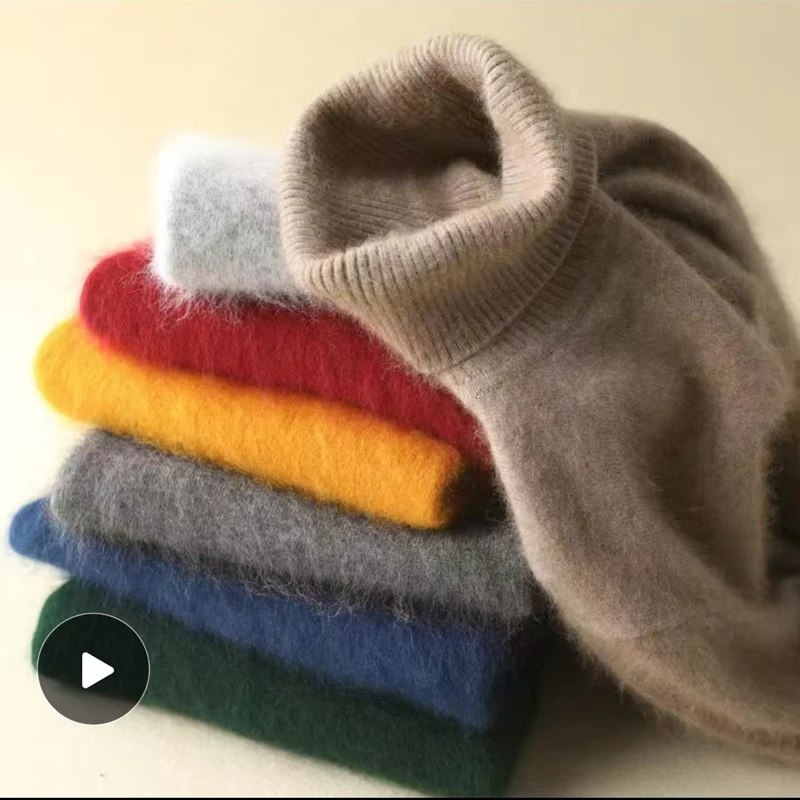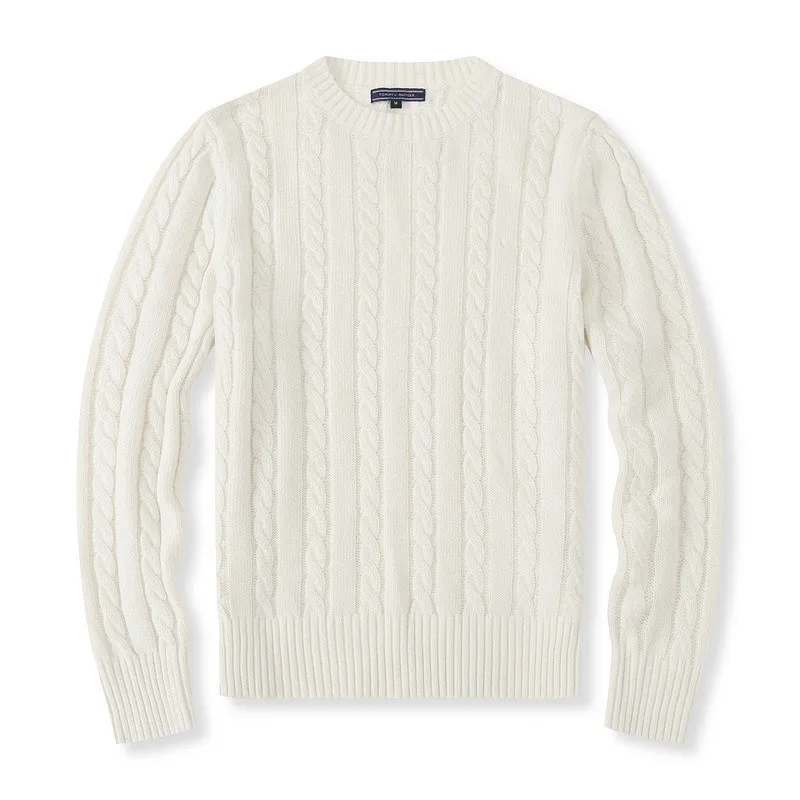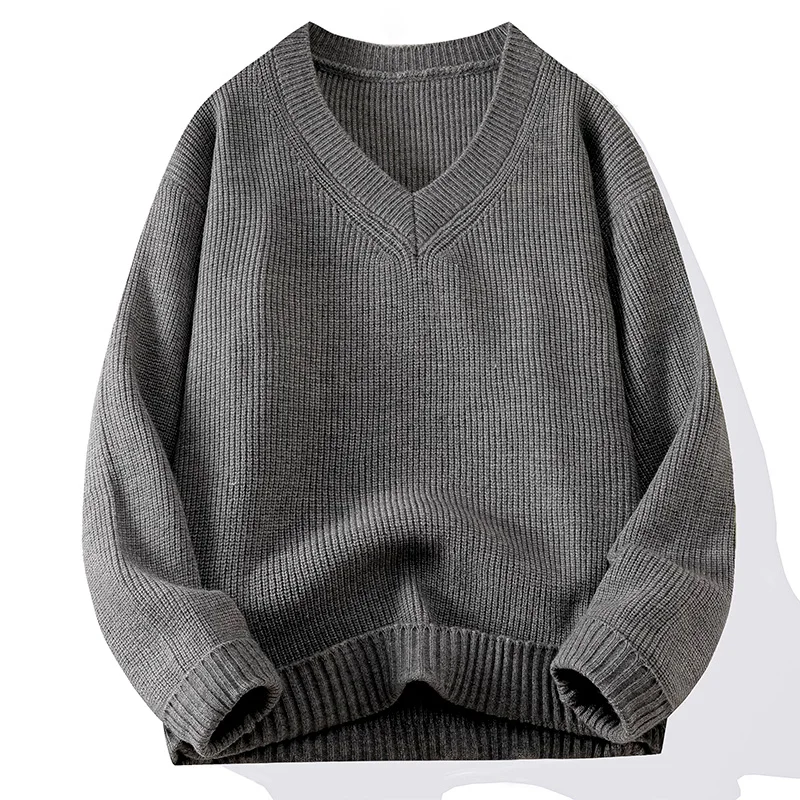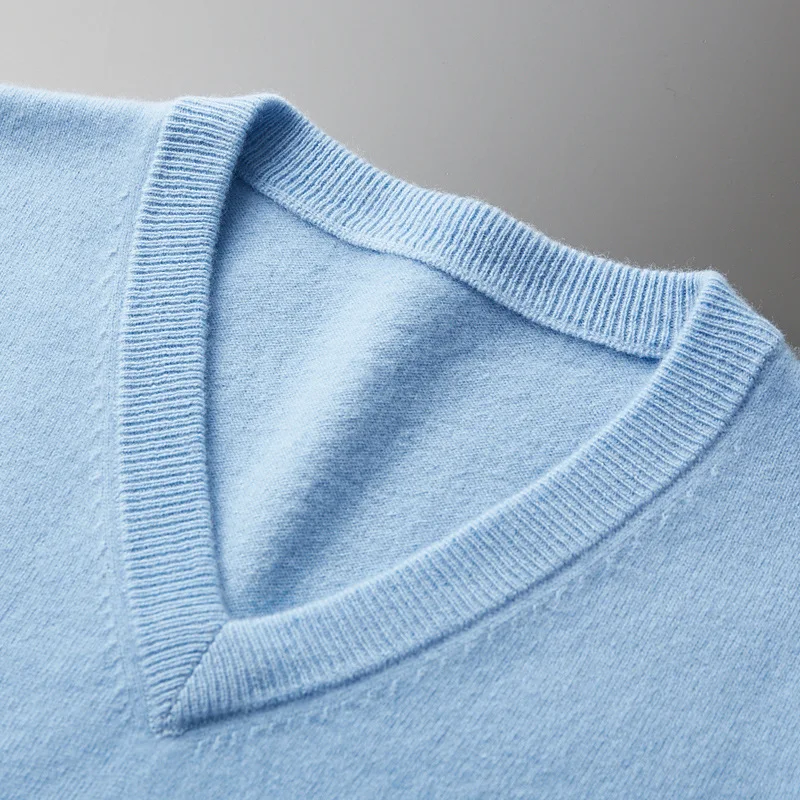Introduction: Why Proper Cashmere Storage Matters
Cashmere stands as one of the most luxurious natural fibers in the world – soft, insulating, and incredibly comfortable. Made from the fine undercoat of cashmere goats, this premium material represents not just a garment but a true investment in your wardrobe. High-quality cashmere sweaters can last for decades when properly maintained, making proper storage techniques absolutely essential.
Without appropriate care, your cashmere pieces face numerous threats that can significantly shorten their lifespan:
- Moth damage – These tiny insects specifically target natural fibers like cashmere, leaving holes and destroying garments
- Stretching and misshaping – Improper positioning during storage can permanently distort your beloved pieces
- Pilling and fiber degradation – Poor storage conditions accelerate the breakdown of delicate cashmere fibers
- Odor development – Musty smells can permeate fibers when stored in humid or poorly ventilated spaces
- Mildew and mold growth – Particularly problematic in damp environments
- Color fading and yellowing – Exposure to light and improper cleaning before storage can permanently alter appearance
With proper care and storage, cashmere garments can maintain their luxurious feel and appearance for 20+ years, while improper storage can reduce this to just a few seasons. Preserving luxury cashmere requires a comprehensive approach that includes proper cleaning, folding, protection against pests, appropriate container selection, and environmental control.
This guide walks you through each critical step to ensure your cashmere remains in pristine condition season after season.
Step 1: Essential Pre-Storage Cleaning Techniques
Before your cashmere goes into hibernation, proper cleaning is absolutely non-negotiable. Even invisible soils like body oils, perspiration, and food particles can become permanent stains during storage. More concerning, these residues act like a beacon for moths and other pests that can devastate your garments.
The cleaning approach you select should depend on the garment’s condition, soiling level, and care instructions. For most cashmere items, the cleaning workflow should follow these key steps:
- Check for visible stains or spots that need targeted treatment
- Select the appropriate cleaning method (hand washing or professional cleaning)
- Ensure complete drying before storage
- Give a final inspection and gentle brushing to restore the fabric’s natural loft
For lightly worn items, a gentle hand washing approach is ideal, while heavily soiled garments, structured pieces, or items with special embellishments may benefit from professional cleaning.
Hand Washing Your Cashmere
Hand washing is often the gentlest and most effective way to clean cashmere before storage:
- Fill a clean basin with cold to lukewarm water (never hot, as it can cause shrinking and felting)
- Add a gentle detergent specifically formulated for wool/cashmere, baby shampoo, or pH-neutral soap (approximately 1 teaspoon per gallon of water)
- Submerge your cashmere completely and gently press down to ensure water penetrates the fibers
- Soak for 10-15 minutes, allowing the detergent to lift soil without agitation
- Gently swirl the garment without rubbing, twisting, or wringing
- Drain soapy water and refill with clean, cool water for rinsing
- Repeat rinse process until water runs clear and no soap remains
- Remove excess water by pressing the garment between clean towels (never wring or twist)
Products like Woolite Dark, The Laundress Wool & Cashmere Shampoo, or Eucalan work particularly well for cashmere care, as they clean effectively without harsh chemicals that can damage delicate fibers.
Delicate items like cashmere turtlenecks require extra care during washing to prevent stretching around the neck area. Support this section during handling to maintain its shape.
When to Choose Professional Dry Cleaning
While hand washing works for most items, professional cleaning is sometimes the better option:
- Items with significant staining or odors
- Heavily structured garments with linings or tailored elements
- Pieces with special embellishments, beading, or delicate details
- When care labels specifically recommend dry cleaning only
- Items you’re not comfortable washing yourself
When selecting a dry cleaner, look for one with specific experience handling luxury knits. Ask about their process for cashmere, whether they use gentle solvents, and how they handle delicate items. A quality cleaner will wrap buttons, reinforce delicate areas, and use appropriate pressing techniques.
Prepare your garments by pointing out any stains and mentioning that the items are cashmere, which requires special handling.
The Critical Drying Process
The drying process is just as important as washing when preparing cashmere for storage:
- Lay clean, dry towels on a flat surface away from direct sunlight and heat sources
- Place your damp cashmere flat on the towels, gently reshaping to its original dimensions
- Roll the towel with the garment inside to remove additional moisture
- Transfer to fresh, dry towels and reshape again
- Allow to air dry completely, which typically takes 24-48 hours
- Test for dampness in thick areas like underarms, collars, and seams before storage
Complete dryness is absolutely essential, as even slight moisture can lead to mildew growth during storage. Once dry, a gentle brushing with a cashmere comb or soft bristle brush can help restore the fabric’s natural loft and prevent pilling in your cashmere garments.

Step 2: The Folding Fundamentals – Never Hang Cashmere
One of the most damaging mistakes in cashmere care is hanging these delicate garments. Unlike woven fabrics, knitted cashmere will stretch under its own weight when hung, leading to distorted shoulders, elongated silhouettes, and permanent misshaping.
The science is simple: gravity pulls the fibers downward, causing them to stretch over time. What might not be noticeable after a day becomes irreversible damage after weeks or months in storage. This is why cashmere should be folded, not hung, to maintain its intended shape and structure.
Follow these folding techniques for different cashmere items:
For sweaters and pullovers:
1. Lay the garment face-down on a clean, flat surface
2. Fold one side inward about 1/3 of the width, with the sleeve folded straight down
3. Repeat with the other side, creating a rectangle
4. Fold in half from bottom to top, or in thirds for longer pieces
For cardigans:
1. Button the cardigan completely
2. Follow the same folding method as sweaters
3. For longer cardigans, consider folding into thirds or quarters from bottom to top
For scarves:
1. Lay flat and fold in half lengthwise
2. Continue folding in half or thirds until you reach your desired storage size
3. Avoid creasing the same spots repeatedly during seasonal storage
Textured pieces like cable knit sweaters require special attention, as improper folding can flatten their dimensional patterns. Using acid-free tissue paper between folds helps maintain the structure and safely store your cashmere by preventing sharp creases that can become permanent over time.
For embellished items or those with decorative elements, place tissue paper over these areas before folding to prevent imprints and damage to the embellishments.
Step 3: Superior Protection Against Moths and Other Pests
Moths pose the single greatest threat to stored cashmere. Unlike the flying moths you see around lights, clothing moths are small, secretive insects that operate in darkness. It’s actually their larvae that do the damage, feeding on protein fibers like cashmere, especially those with residual body oils or food particles.
A single female moth can lay 40-50 eggs, which can hatch in as little as 10 days. Once an infestation takes hold, it can destroy an entire collection of cashmere within weeks. That’s why protecting cashmere from moths requires a multi-layered approach:
- Clean thoroughly before storage – Eliminating food sources is your first defense
- Implement multiple deterrents – Never rely on a single method of protection
- Create physical barriers – Properly sealed containers prevent moths from reaching your garments
- Monitor regularly – Early detection prevents widespread damage
An effective approach combines these strategies rather than relying on just one method. Research shows that cashmere items with food residue are 80% more likely to suffer moth damage than properly cleaned pieces.
Natural Moth Deterrents That Actually Work
Natural deterrents can be highly effective when used correctly:
Cedar products:
* Cedar blocks, balls, or planks release aromatic oils that repel moths
* Effectiveness diminishes over time (typically 3-6 months)
* Rejuvenate by light sanding or adding cedar essential oil
* Most effective when items are enclosed with the cedar in a contained space
Lavender and herbal sachets:
* Natural lavender contains linalool, which repels moths
* Other effective herbs include rosemary, thyme, cloves, and bay leaves
* Replace or refresh every 2-3 months as scents fade
* Place sachets directly between folded garments for maximum effectiveness
For optimal protection, combine multiple deterrents. Place cedar blocks at the bottom of storage containers, then layer folded garments with lavender sachets between them. This creates a hostile environment for moths throughout your storage area.
The Freezer Method: Emergency Treatment and Prevention
The freezing technique is both a preventative measure and emergency treatment for suspected infestations:
- Seal the cashmere item in an airtight plastic bag, removing as much air as possible
- Place in freezer at 0°F/-18°C or colder
- Maintain freezing temperatures for a minimum of 72 hours (longer is better)
- Remove and allow to return to room temperature while still sealed in the bag
- Air out the item before returning to storage
This method works because extreme cold kills moths at all life stages by crystallizing their cellular structure. It’s particularly useful for items that can’t be washed easily or when you suspect early infestation.
The freezing method does have limitations – it doesn’t remove the conditions that attracted moths initially, and it won’t prevent future infestations. Consider it one tool in your comprehensive moth prevention strategy, not a complete solution on its own.
Step 4: Selecting Optimal Storage Containers
The container you choose creates the environment that either preserves or damages your cashmere during storage. The ideal storage solution balances protection against external threats with the fabric’s need to breathe.
When evaluating storage options, consider these essential criteria:
| Storage Type | Breathability | Pest Protection | Moisture Control | Ideal Use Case |
|---|---|---|---|---|
| Cotton/Canvas Bags | Excellent | Moderate | Good | Everyday/Short-term |
| Acid-Free Boxes | Good | Good | Good | Long-term/Archival |
| Plastic Containers | Poor-Fair* | Excellent | Poor* | Emergency/Space-limited |
| Cedar Chests | Good | Excellent | Good | Investment pieces |
| Vacuum Bags | Poor | Excellent | Excellent | Travel/Extreme Space Limits |
*Can be improved with proper modifications and moisture control
For most cashmere owners, a combination approach works best – breathable containers with added protection elements. This complete guide to cashmere storage provides detailed container assessments based on your specific needs.

Breathable Options: Cotton Garment Bags and Archival Boxes
Breathable storage options should be your first choice for most cashmere items:
Cotton/canvas garment bags:
* Choose 100% natural, unbleached cotton or canvas
* Look for bags with secure closures but not completely airtight seals
* Select appropriate sizes to prevent overcrowding
* Consider bags with cedar inserts for added moth protection
* Avoid plastic/vinyl windows which trap moisture
Acid-free archival boxes:
* Ideal for long-term storage of valuable pieces
* Look for boxes labeled “lignin-free” and “pH neutral”
* Use acid-free tissue between folded garments
* Never overfill – allow room for air circulation
* Store flat, not stacked, if possible
When storing multiple men’s cashmere pullovers in a single container, place the heaviest items at the bottom and the most delicate on top. Always insert acid-free tissue paper between each garment to prevent dye transfer and minimize friction.
When to Use Airtight Containers (And When Not To)
Airtight storage can be appropriate in specific situations but comes with significant risks:
Consider airtight containers when:
* You live in extremely humid environments (over 65% relative humidity)
* Moth infestation is active in your home
* Storage space is in a flood-prone area
* Short-term storage during travel or moves is needed
Avoid airtight containers when:
* Items will be stored for multiple seasons
* Garments aren’t completely dry
* Climate control is inconsistent
* Regular inspection isn’t possible
If you must use airtight containers, add silica gel packets to absorb moisture and change them regularly. Monitor for condensation inside the container, which signals a moisture problem that could damage your cashmere.
Signs that airtight storage is causing problems include musty odors, yellow discoloration, or a feeling of dampness when the container is opened. If you notice these issues, immediately remove the items and allow them to air out completely.
Step 5: Creating the Ideal Storage Environment
The space where you store your cashmere is just as important as how you prepare and contain it. Environmental factors directly affect fiber integrity, color stability, and protection against pests and mildew.
The science of long-term preservation of cashmere fabric points to these ideal conditions:
- Temperature: 60-75°F (15-24°C) with minimal fluctuation
- Humidity: 40-50% relative humidity (RH)
- Light exposure: Minimal to none, especially no direct sunlight
- Air circulation: Moderate but consistent
- Stability: Limited vibration and movement
Research on natural fibers shows that cashmere stored in environments with humidity above 65% has a 70% greater chance of developing mold or mildew within one season. Similarly, exposure to UV light can cause visible fading in as little as 3-4 weeks of direct exposure.
Locations to avoid:
* Attics (temperature extremes and often poor pest control)
* Basements (typically too humid and prone to flooding)
* Garages (temperature fluctuation, pests, and often chemical exposure)
* Exterior walls or closets with exterior walls (temperature fluctuation)
* Areas near heating vents, radiators, or sunny windows (too dry and hot)
Ideal storage locations:
* Interior closets away from bathrooms and kitchens
* Dedicated wardrobes in temperature-controlled rooms
* Under-bed storage in well-ventilated bedrooms
* Specialized clothing storage rooms with climate control
In areas with seasonal humidity changes, consider using a dehumidifier during humid months and a humidifier during extremely dry periods. Hygrometers (humidity monitors) are inexpensive and can help you maintain optimal conditions.

Step 6: Seasonal Storage vs. Everyday Storage Solutions
Cashmere care requires different approaches depending on how frequently you access your garments. Seasonal storage for cashmere preservation differs significantly from managing pieces in regular rotation.
| Factor | Seasonal Storage (3+ months) | Regular Rotation Storage |
|---|---|---|
| Cleaning | Mandatory complete cleaning | Air out between wears |
| Container | Breathable, sealed against pests | Accessible drawers/shelves |
| Folding | Precise with tissue between folds | Basic folding sufficient |
| Moth Protection | Comprehensive systems | Basic deterrents |
| Inspection | Before storage and upon retrieval | Regular visual checks |
| Location | Climate-controlled, undisturbed | Easily accessible areas |
Climate also impacts your strategy – those in humid tropical regions need more moisture protection, while those in desert climates must guard against excessive dryness that can make fibers brittle.
Creating a seasonal transition plan for your women’s cashmere pullovers and other items ensures they move smoothly between active wear and storage without damage.
Short-Term Storage Between Wears
During active wearing seasons, proper short-term storage extends garment life:
- Allow 24-48 hours of rest between wearings to let fibers recover their shape
- Air garments after wearing by laying flat or hanging briefly (1-2 hours maximum) in a well-ventilated area
- Use a fabric brush or lint roller to remove surface debris before returning to storage
- Store in drawer dividers or on shelves with enough space to avoid compression
- Place cedar blocks or lavender sachets in drawers and refresh them monthly
- Implement a rotation system to avoid wearing the same items repeatedly
Quick refreshing between wears can be accomplished with a fabric steamer held 6-8 inches away from the garment (never direct steam contact) or by hanging the piece in a bathroom during a shower (away from water splashes).
Regular inspection during the wearing season helps catch small issues before they become major problems. Check for early signs of pilling, loose threads, or small holes which are much easier to repair when caught early.
Long-Term Seasonal Storage Preparation
When preparing for long-term storage at season’s end:
- Clean all items following appropriate methods for each piece
- Repair any damage – loose buttons, small holes, or weakened seams
- Create an inventory with photos and condition notes (digital or written)
- Implement comprehensive moth protection with multiple deterrents
- Label storage containers clearly with contents and storage date
- Place in ideal location away from environmental threats
- Calendar reminder for mid-season check and end-of-storage inspection
For valuable collections, consider creating a diagram of where specific pieces are stored, especially if using multiple containers or storage locations.

Cashmere Wrap Sweaters, Women's Cashmere Pullovers
$75.89 Select options This product has multiple variants. The options may be chosen on the product pageCashmere Cable Knit Sweaters, Women's Cashmere Pullovers
Price range: $111.82 through $112.93 Select options This product has multiple variants. The options may be chosen on the product pageCropped Cashmere Sweaters, Women's Cashmere Pullovers
$155.77 Select options This product has multiple variants. The options may be chosen on the product pageOversized Cashmere Sweaters, Plus Size Cashmere Sweaters, Women's V-Neck Cashmere Sweaters
$136.87 Select options This product has multiple variants. The options may be chosen on the product page- Price range: $108.11 through $130.03 Select options This product has multiple variants. The options may be chosen on the product page
Striped Cashmere Sweaters, Women's Cashmere Pullovers
$139.68 Select options This product has multiple variants. The options may be chosen on the product page
Step 7: Monitoring and Maintenance During Storage
Even perfectly prepared cashmere requires ongoing attention during storage. Establishing a regular monitoring schedule prevents small issues from becoming irreversible damage.
Recommended inspection timeline:
* First month: Check weekly for signs of pests or moisture problems
* Months 2-3: Bi-weekly inspections
* Long-term storage: Monthly checks
During each inspection, look for:
* Small holes or fiber disruption (potential moth activity)
* Musty odors (indicates mold/mildew)
* Discoloration or yellowing (moisture or chemical exposure)
* Visible pests or eggs (immediate action required)
* Depletion of deterrents (cedar aroma fading, lavender sachets losing scent)
Proper inspection technique minimizes disturbance to carefully stored items:
- Wash hands to remove oils and lotions
- Gently remove the top item and inspect thoroughly
- Check container interior before replacing the item
- Refresh deterrents as needed
- Reseal container properly
Cedar products require regular maintenance to remain effective. Sand cedar blocks lightly with fine sandpaper every 3-4 months to expose fresh oils, or refresh with cedar essential oil. Lavender and other herbal sachets typically need replacement every 2-3 months.
The ultimate guide to cashmere storage emphasizes that responding quickly to early warning signs prevents devastating damage. If you discover evidence of moths, immediately isolate affected items, freeze them following the protocol described earlier, then clean thoroughly before returning to storage with enhanced protection.
Step 8: Reviving Cashmere After Storage
Transitioning cashmere from storage back into your wardrobe requires care to restore its optimal condition:
- Unpack in a clean, well-lit area where you can inspect each item thoroughly
- Allow pieces to breathe for 24-48 hours in a well-ventilated room
- Gently brush with a cashmere brush to restore loft and remove any dust
- Address minor wrinkles with appropriate methods:
* For light creasing: Hang in a steamy bathroom (away from water)
* For moderate wrinkles: Use a steamer held 6-8 inches away from the fabric
* Never use direct iron contact on cashmere
Some storage-related issues require specific treatments:
- Persistent odors: Air outdoors on a dry, overcast day (never in direct sunlight)
- Slight stiffness: Gentle hand washing often restores softness
- Minor pilling: Use a cashmere comb or fabric shaver designed for delicate knits
Oversized cashmere sweaters may need special attention when coming out of storage, as their relaxed structure can make them more prone to dimensional changes. Give these pieces extra time to relax and reshape before wearing.

Common Cashmere Storage Mistakes to Avoid
Even with the best intentions, certain storage practices can damage your valuable cashmere. Here are the most common mistakes and their solutions:
Mistake: Storing without cleaning
Problem: Body oils, perfumes, and invisible food particles attract moths and can set as permanent stains.
Solution: Always clean cashmere before storage, even if it appears clean.
Mistake: Using plastic dry cleaning bags
Problem: These trap moisture and chemicals while preventing air circulation.
Solution: Remove from plastic immediately and use breathable cotton bags instead.
Mistake: Overpacking storage containers
Problem: Compression damages fibers, creates deep creases, and prevents air circulation.
Solution: Store fewer items per container with space between them.
Mistake: Ignoring environmental factors
Problem: Heat, humidity, and light cause fiber damage, color changes, and create pest-friendly conditions.
Solution: Choose storage locations away from environmental extremes.
Mistake: Skipping moth protection
Problem: Even clean cashmere is vulnerable to determined pests.
Solution: Implement multiple layers of protection with regular refreshing of deterrents.
Mistake: Hanging cashmere
Problem: Gravity stretches fibers, causing permanent distortion and shoulder bumps.
Solution: Always fold cashmere as outlined in the cashmere sweater storage guide.
Mistake: Using mothballs
Problem: Harsh chemicals leave persistent odors and can damage fibers.
Solution: Use natural alternatives like cedar and lavender.
Is Professional Storage Worth It? When to Consider Expert Help
Professional cashmere storage services offer specialized care for your investment pieces, but they come at a premium price. Consider these factors when deciding if professional storage is right for your collection:
| Professional Storage Advantages | Professional Storage Disadvantages |
|---|---|
| Climate-controlled environments | Cost ($8-30 per item per month) |
| Expert handling and folding | Limited access to your items |
| Specialized pest prevention | Less control over specific conditions |
| Insurance coverage | Potential cleaning fees upon retrieval |
| Conservation-grade materials | Transportation risks to/from facility |
Professional storage makes the most sense when:
* You have limited space in your home
* Your collection includes rare or extremely valuable pieces
* You live in an environment that’s hostile to cashmere (extremely humid or pest-prone)
* You’ll be away from home for extended periods
* You have a large collection that’s difficult to properly maintain yourself
When researching professional services, ask these critical questions:
* What specific temperature and humidity controls are in place?
* How do they prevent and monitor for pests?
* What cleaning processes are required before storage?
* What insurance coverage is provided?
* How are items inventoried and tracked?
* What is the inspection schedule during storage?
* How quickly can items be retrieved if needed?
Conclusion: Creating Your Personal Cashmere Care System
Proper cashmere storage is an investment in extending the life of your luxury pieces. By following the comprehensive approach outlined in this guide—thorough cleaning, proper folding, effective pest prevention, appropriate containers, and environmental control—you can protect your cashmere for decades rather than seasons.
The effort you invest in proper storage directly translates to maintaining the exceptional softness, appearance, and value of your cashmere collection. Whether you own a single treasured sweater or an extensive wardrobe of fine knits, implementing these practices will ensure your cashmere remains as luxurious as the day you purchased it.
Develop a personalized system that works with your climate, space constraints, and collection size. Remember that consistency is key—regular maintenance and monitoring prevent the small issues that can become major problems when ignored.
At Estate Cloth, we believe that quality cashmere is an investment worth protecting, and proper storage is the foundation of cashmere longevity.







